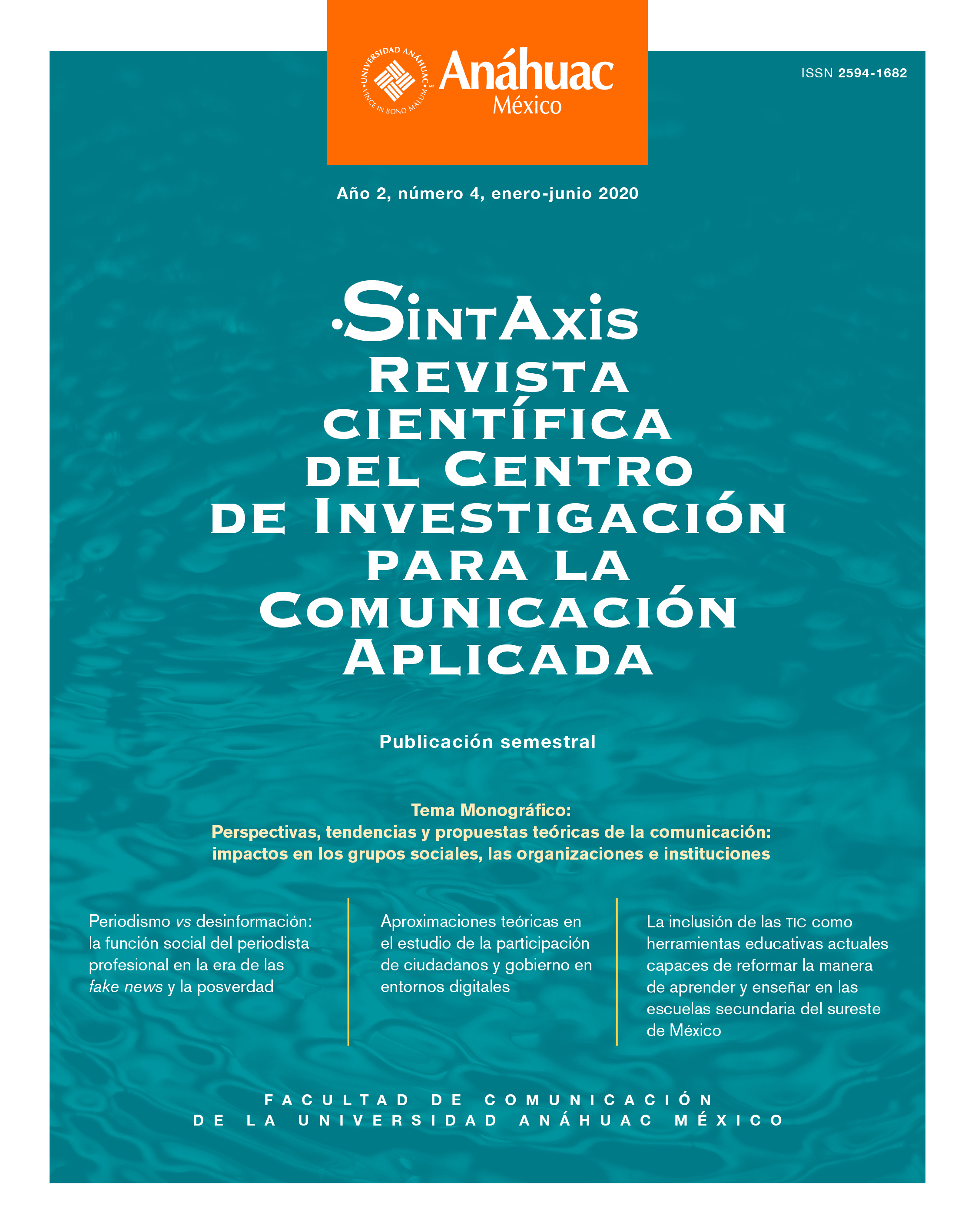The Organization from the Communication Theory’s Standpoint. Between Traditions and Metaphors
Main Article Content
Abstract
This article aims to explore the contributions that the Theory of Human Communication can make to the study of organizations. We approached this question as follows: we first examined the definition of organization in general terms, from the various levels of human communication; then we looked at how the communication-organization relationship is explained by the academic communication traditions defined by Robert Craig and further refined by Littlejohn and Foss. The second part of the article explores some of the metaphors conventionally used to define organizations and, based on these, examines the communication concept. Finally, from the range of existing applied theories, we summarize the strategic theory put forward by Sandra Massoni which builds upon the idea of organizational communication as meta-communication.
Downloads
PLUMX Metrics
Article Details
The author keeps the property rights with no restriction whatsoever and guarantees the magazine the right to be the first publication of the work. The author is free to deposit the published version in any other medium, such as an institutional archive or on his own website.
References
Craig, R._(1993). Why are there so many communication theories? Journal of Communication, 43(3), 26–33. https://doi.org/10.1111/j.1460-2466.1993.tb01273.xCraig, R. (1999) Communication theory as a field. Communication Theory, 9(2), 119–161.
Defleur, M.; Kearney, P.; Plax, T.; Defleur, M. (2005). Fundamentos de comunicación humana. 3ª ed. México: McGraw Hill.
Littlejohn, S., y Foss, K. (2010). Theories of human communication, 10a. ed. Long Grove: Waveland. Martín Serrano, M.; Piñuel Raigada, J.L.; Gracia Sanz, J. y Arias Fernández, M.A. (1982), Teoría de la comunicación. Madrid: Universidad Complutense de Madrid. Massoni, S. (2013). Metodologías de la comunicación estratégica. Del inventario al encuentro socio cultural. Rosario / Sta Fe: Homo Sapiens. Mendoza, I. (2019). Editorial. Cultura organizacional. Blog UTEL Universidad, disponible en https://www.utel.edu.mx/blog/10-consejos-para/identidad-y-cultura-organizacional/ (Consulta:10 de febrero de 2020).
Montiel, S. (2016). 7 claves para definir la identidad corporativa en una empresa. Deusto Formación. Disponible en https://www.deustoformacion.com/blog/gestion-empresas/7-claves-para-definir-identidad-corporativa-empresa (Consulta: 10 de enero de 2020).
Pedraza-Álvarez, L.; Obispo-Salazar, K.; Vásquez-González, L., y Gómez-Gómez, L. (2015). Cultura organizacional desde la teoría de Edgar Schein: estudio fenomenológico. Clío América, 9(7), 17–25. https://revistas.unimagdalena.edu.co/index.php/clioamerica/article/view/1462
Rojas de Escalona, B. (2005). El análisis de las metáforas: una estrategia para la comprensión y el cambio en el contexto organizacional. Sapiens, 6(2), 53–62. Recuperado de
http://ve.scielo.org/scielo.php?script=sci_arttext&pid=S1317-58152005000200005&lng=es&tlng=es (Consulta: 20 de febrero de 2020).

